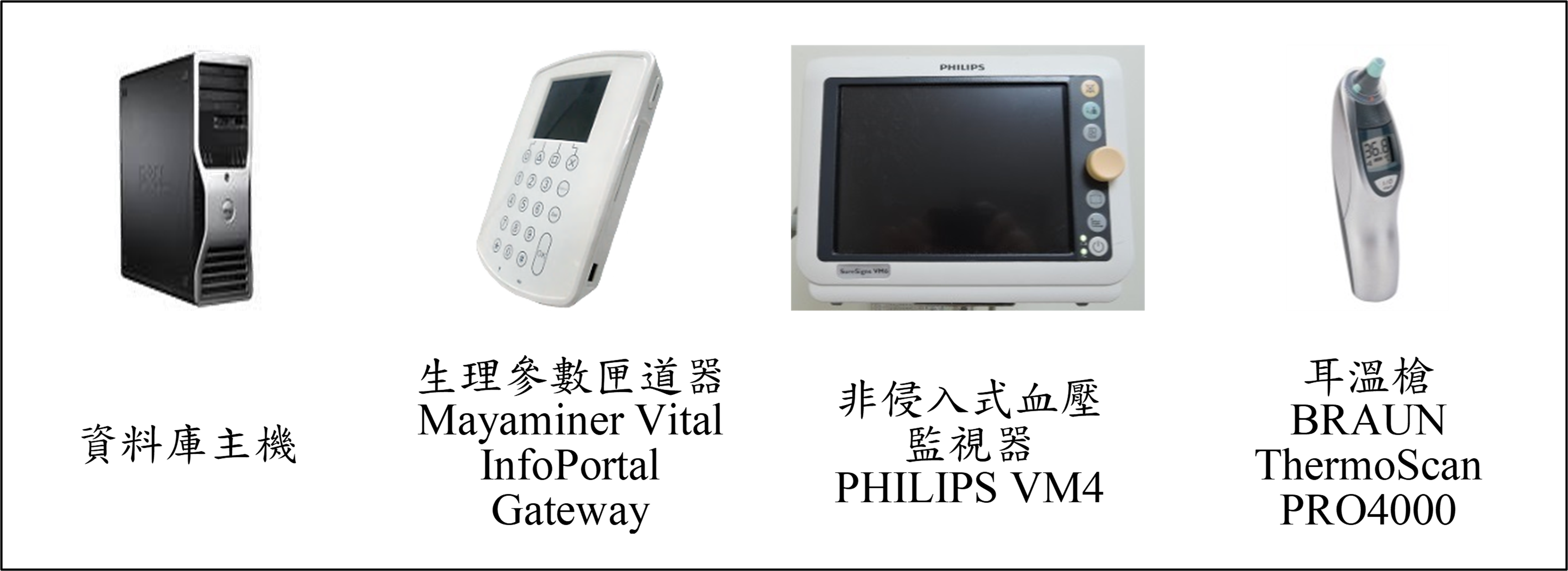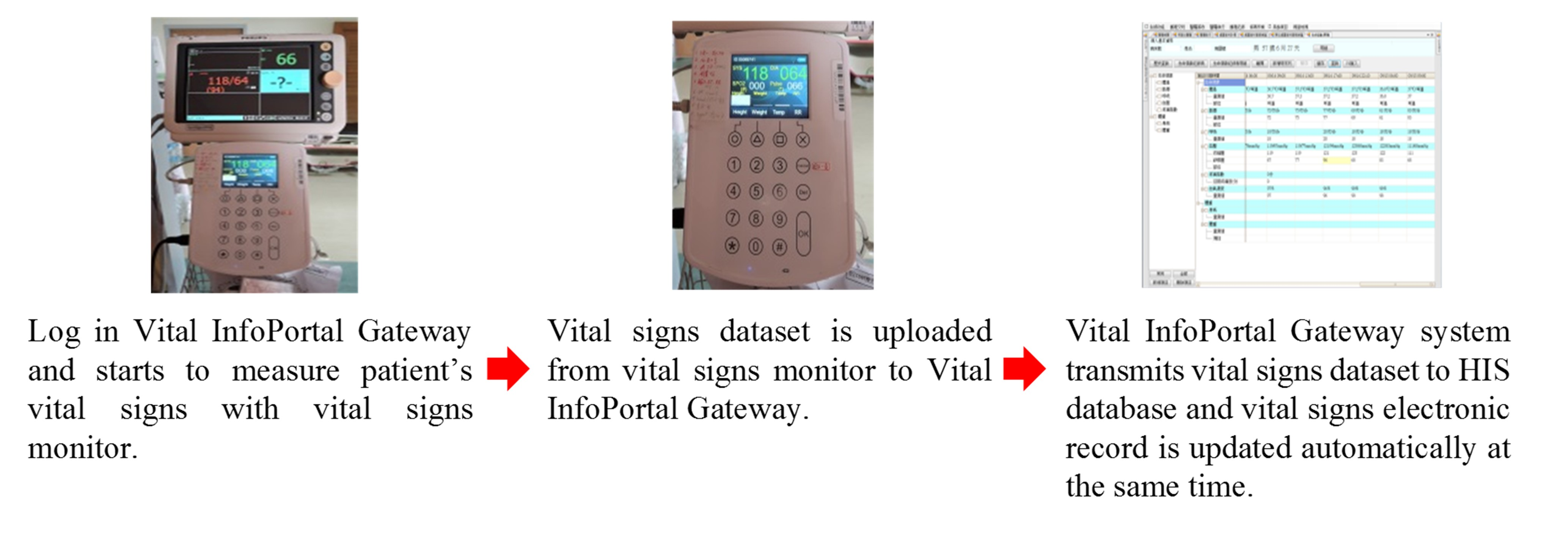Automated upload of physiological information
Mei-Chun Chen, Informatics Nurse Specialist, Dept. of Nursing
Patients’ vital signs are the fundamental evaluation data that facilitate clinical decision-making for medical personnel. Thus, vital signs must be evaluated accurately in a timely manner. Erroneous or delayed data may lead to incorrect clinical decision-making and treatment delay. To maintain electronic vital sign records in the nursing information system of National Cheng Kung University Hospital, the Nursing Department has gradually (since 2015) established 57 sets of vital information portals at 11 nurses’ stations for the wireless transmission of vital sign readings. Vital sign readings can be transmitted to the hospital database within 3 min at the fastest and synced to the vital sign records maintained in the nursing information system. This enables medical teams to browse and obtain relevant information. This system helped us overcome the problems associated with using paper-based records, for which medical teams had to wait for an average of 120 min before they could access the patients’ vital sign records.
The vital information portals facilitate the wireless transmission of vital sign readings. This technology simplifies for nurses the acquisition and maintenance of patients’ vital sign data, thus reducing the workload involved in clinical documentation. In addition, it improves the communication efficiency of medical teams, which ensures that patients receive adequate medical care in a timely manner. These infrastructures promote smart medicine, are cost-effective, and add service value; hence, they should be introduced and promoted in all clinical units. Moreover, units dedicated to the care of patients with COVID-19 or intensive care units can use this technology to integrate medical services and data. The implementation of no-contact smart patient monitoring systems may help maintain accurate physiological information, alleviate the burden on healthcare personnel, and reduce infection risks.
Fig. 1. Requirements for the vital information portal system
Fig. 2. Workflow of nurses using the vital information portals


